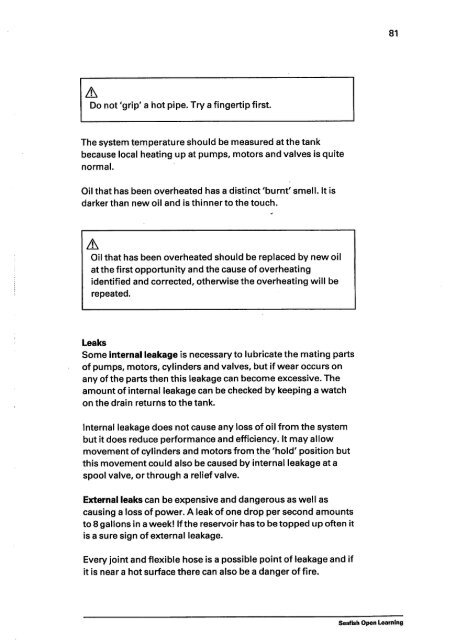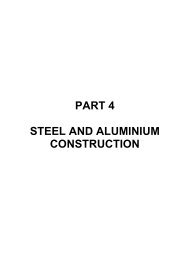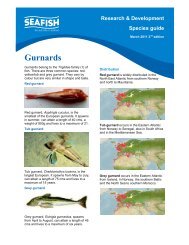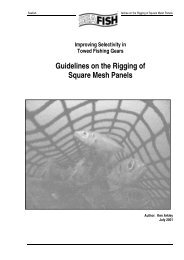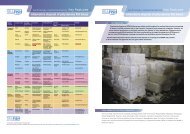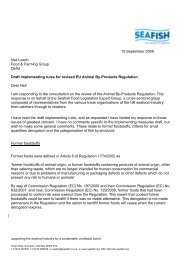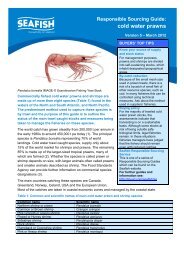Hydraulics - Seafish
Hydraulics - Seafish
Hydraulics - Seafish
Create successful ePaper yourself
Turn your PDF publications into a flip-book with our unique Google optimized e-Paper software.
81<br />
Do not 'grip' a hot pipe. Try a fingertip first.<br />
The system temperature should be measured at the tank<br />
because local heating up at pumps, motors and valves is quite<br />
normal.<br />
Oil that has been overheated has a distinct 'burnt' smell. It is<br />
darker than new oil and is thinner to the touch.<br />
Oil that has been overheated should be replaced by new oil<br />
at the first opportunity and the cause of overheating<br />
identified and corrected, otherwise the overheating will be<br />
repeated.<br />
Leaks<br />
Some internal leakage is necessary to lubricate the mating parts<br />
of pumps, motors, cylinders and valves, but if wear occurs on<br />
any of the parts then this leakage can become excessive. The<br />
amount of internal leakage can be checked by keeping a watch<br />
on the drain returns to the tank.<br />
Internal leakage does not cause any loss of oil from the system<br />
but it does reduce performance and efficiency. It may allow<br />
movement of cylinders and motors from the 'hold' position but<br />
this movement could also be caused by internal leakage at a<br />
spool valve, or through a relief valve.<br />
External leaks can be expensive and dangerous as well as<br />
causing a loss of power. A leak of one drop per second amounts<br />
to 8 gallons in a week! If the reservoir has to be topped up often it<br />
is a sure sign of external leakage.<br />
Every joint and flexible hose is a possible point of leakage and if<br />
it is near a hot surface there can also be a danger of fire.<br />
<strong>Seafish</strong> Open Learning


